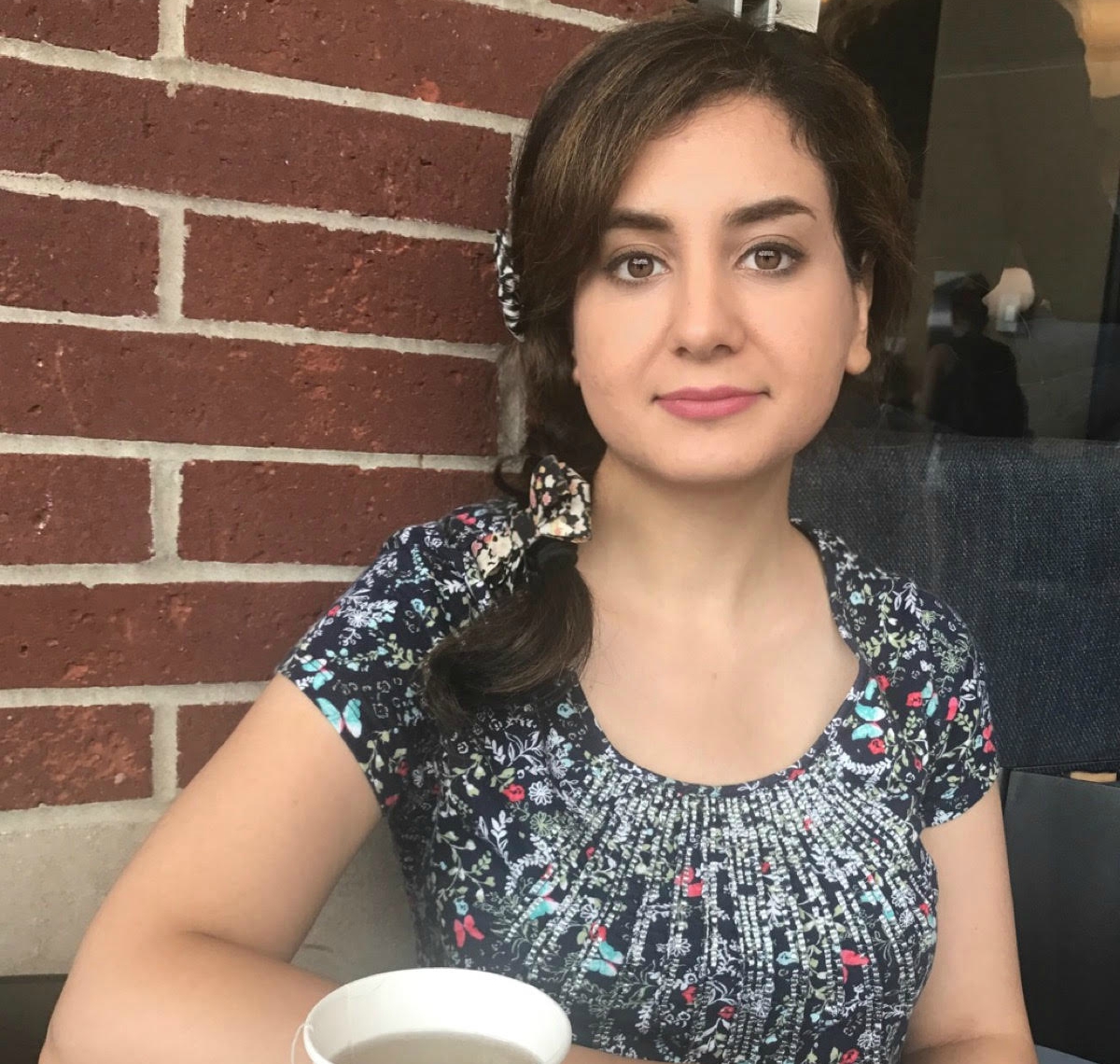
Shahrzad Abri, PhD
sf70@uakron.edu
Graduate Student
Chemical and Biomolecular Engineering
Biography
In 2014, I obtained my M.S. degree in Biomedical Engineering, Biomaterials, from the University of Tehran, Tehran, Iran, where I worked on a project titled: “Fabrication and Characterization of Nanofiber Wound Dressing Containing Chitosan and Gelatin Particles for Dual Release of Antibiotic and Sedative Drugs”. I am currently pursuing my Ph.D. in Chemical and Biomolecular Engineering at the University of Akron under the supervision of professor Leipzig. My research interests include biomaterial-associated wound healing, targeted and controlled drug delivery via different polymeric carriers, tissue regeneration, and scaffold design. My research focuses currently on chitosan-based oxygenated materials capable of active agent delivery with diverse applications in cutaneous wound healing. As outside lab activities, I enjoy hiking, cycling, and reading. What I would call my dream is to build a professional wound healing center specialized for children!
Education
B. Science. in Biomedical Engineering (Biomaterials), 2007-2011, Department of Biomedical Engineering, Islamic Azad University, Science and Research Branch, Tehran, Iran.
M. Science. in Biomedical Engineering (Biomaterials), 2012-2014, Department of Life Science Engineering, University of Tehran, Tehran, Iran.
PhD, Chemical and Biomolecular Engineering, University of Akron, Akron, OH, 2022
Awards
Ranked 1st and won 1st grade award in the examination section of the “First Iranian Biomedical Engineering Festival, 2011”
Publications/Book Chapters
- Abri S, Attia R*, Leipzig ND. Modulatory contribution of oxygenating hydrogel and polyhexamethylene biguanide on the antimicrobial potency of neutrophil-like cells. 2022. ACS Biomaterials Science & Engineering. Aug 12, 2022, 8, 9, 3842–3855. doi: 10.1021/acsbiomaterials.2c00292
- M Farrag, S Abri, ND Leipzig. “pH-dependent RNA Isolation from Cells Encapsulated in Chitosan-based Biomaterials.” International Journal of Biological Macromolecules, (2019). December 30.
- S Abri, AA Ghatpande, J Ress, HA Barton, ND Leipzig. “Polyionic Complexed Antibacterial Heparin-Chitosan Nanoparticles for Antibiotic Delivery.” ACS Applied Bio Materials, (2019): volumer 2, 5848-5858.
- Shabnam Movassaghi, Z N Sharifi, M Koosha, MA Abdollahifar, S Fathollahipour, J Tavakoli, S Abdi. “Effect of Honey/PVA Hydrogel Loaded by Erythromycin on Full-Thickness Skin Wound Healing in Rats; Stereological Study.” Galen Medical Journal, (2019): vol. 8, p. 1362.
- S Fathollahipour, M Koosha, J Tavakoli, S Maziarfar, J Fallah Mehrabadi. “Erythromycin-Releasing PVA/sucrose and PVA/honey Hydrogels as Wound Dressings With Antibacterial Activity and Enhanced Bio-adhesion.” Iranian Journal of Pharmaceutical Research, (2019).
- PS Patil, S Fathollahipour, A Inmann, Anup Pant, R Amini, LP Shriver, ND Leipzig. “Fluorinated Methacrylamide Chitosan Hydrogel Dressings Improve Diabetic Wound Healing.” Advances in Wound Care (2019): vol. 8, No. 8.
- S. Fathollahipour, P. S. Patil, and N. D. Leipzig. “Oxygen Regulation in Development: Lessons from Embryogenesis towards Tissue Engineering.” Cells Tissues Organs (2018): 1-22.
- S. Fathollahipour, A. Abouei Mehrizi, A. Ghaee, and M. Koosha, “Electrospinning of PVA/chitosan Nanocomposite Nanofibers Containing Gelatin Nanoparticles as a Dual Drug Delivery System,” Journal of Biomedical Materials Research Part A, vol. 103, pp. 3852- 3862, 2015 .
Conference Papers
- Abri S, Durr HA, Leipzig ND. Oxygenating and antibacterial MACF hydrogel dressings reduce infection on an infected diabetic wound model. Society for Biomaterials 2022 Annual Meeting and Exposition. April 27-30 Baltimore, MD. Oral Presentation. (Travel Award)
- S. Fathollahipour, Nic D. Leipzig, “Heparin-chitosan based nanoparticles for wound healing antibiotic delivery, Society for Biomaterials (SFB) Annual Meeting, 2018 “(Poster presentation).
- S. Fathollahipour, S. Maziarfar, and J. Tavakoli, “Characterization and Evaluation of Acacia Gum Loaded PVA Hybrid Wound Dressing,” Biomedical Engineering (ICBME), 2013, pp. 149-154 (Indexed in IEEE Xplore).
- Z. Gharbanzad, F. Ketabat, S. Fathollahipour, and D. Sardari, “Application of Nanoparticles in Drug Delivery and Imaging,” 1st Annual Conference of the Romanian Society of Hadrontherapy (ICRSH 2013), 2013.
- S. Fathollahipour , A. Abouei Mehrizi, and A. Ghaee, “Fabrication and Characterization of Gelatin Nanoparticles by Nanoprecipitation as a Delivery System for Erythromycin,” 11th International Seminar on Polymer Science and Technology (ISPST 2014), 2014.
- S. Maziarfar, S. Fathollahipour , and A. Abouei Mehrizi, “Design, Synthesis and Characterization of Gelatin Based Microspheres for Controlling the Release Rate of Erythromycin Antibiotic,” CRS, 2014.
- S. Fathollahipour , S. Maziarfar, J. Tavakoli, and A. Abouei Mehrizi, “Synthesis and Evaluation of Erythromycin Loaded PVA-Corn Starch Hydrogel Wound Dressing,” 2014.
- S. Fathollahipour , A. Abouei Mehrizi, A. Ghaee, and M. Koosha, “Non-woven Wound Dressing of Poly(vinyl alcohol)-Chitosan Blends as a Delivery System for Lidocaine Hydrochloride: Fabrication and Evaluation,” 5th International Congress on Nanoscience & Nanotechnology (ICNN2014), 2014.